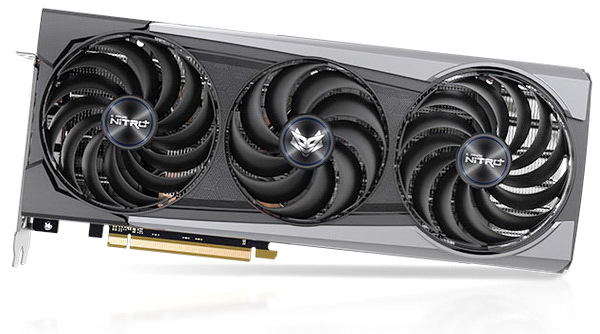INTRODUCTION

If someone was to ask me which company started the 3D revolution in PC graphics back in the 90's my answer would probably be 3DFX. Yes, both ATI and NVIDIA with their Rage and Riva lines respectively might have been the first ones to introduce 3D graphics to PC users but 3DFX took things to a whole new level with their Monster and Voodoo cards. Still, it's been roughly 25 years since then and so today things in the market have become far simpler (for good or bad) with AMD and NVIDIA pretty much competing all year long about which of them owns the fastest GPU. So even though NVIDIA did exceptionally well with their GeForce RTX20x0/RTX30x0 lines AMD did fight back late last year with their Radeon RX 6x00 line and after 2 months of continuous testing today I’ll be talking about the Radeon RX 6800 Nitro+ model by my friends over at SAPPHIRE.
SAPPHIRE Technology continues to be a world leading manufacturer and global supplier of innovative graphics and mainboard products, delivering its AMD Radeon based products to the PC markets addressing gaming, eSports and performance graphics enthusiasts as well as delivering an array of professional graphics products and embedded system solutions. Recently SAPPHIRE has penetrated new markets with a series of GPU Compute server systems targeting the blockchain and commercial cryptocurrency mining businesses.
The AMD Radeon RX 6800 is a PCIe 4.0 x16 graphics card based on the 7nm "Navi 21" (or Big Navi) chip which features 60 RDNA2 compute units, 3840 stream processors, 96 raster units (or render output units), 60 ray accelerators and 240 texture mapping units. In terms of memory AMD did surprise me a bit since they decided on using a total of 16GB of JEDEC standard 16Gbps GDDR6 memory on a 256-bit memory bus. On top of that the RX 6x00 line also features a tiny L3 cache (128MB) which however has a rather impressive speed of 2TB/s and thus can be effectively used for small workloads (primarily when it comes to raytracing and raster operations). As for the SAPPHIRE RX 6800 Nitro+ well it's largely based on the tri-slot reference design and features a total of 3 fans (1 spinning clockwise and 2 spinning counter clock wise), 3 aluminum heatsinks, 6 nickel plated copper heatpipes and a vapor-chamber copper base-plate. Of course, SAPPHIRE couldn't had skipped on secondary features and these include a 3-zone RGB illumination, dual-BIOS, external RGB headers and a factory ready overclock of up to 2190MHz (85MHz over reference). When it comes to connectivity the Radeon RX 6800 Nitro+ is equipped with three full sized DP v1.4 ports and a single HDMI v2.1 port. So, time to see what this "little" beast is capable of.

 O-Sense
O-Sense

.jpg)





.png)

